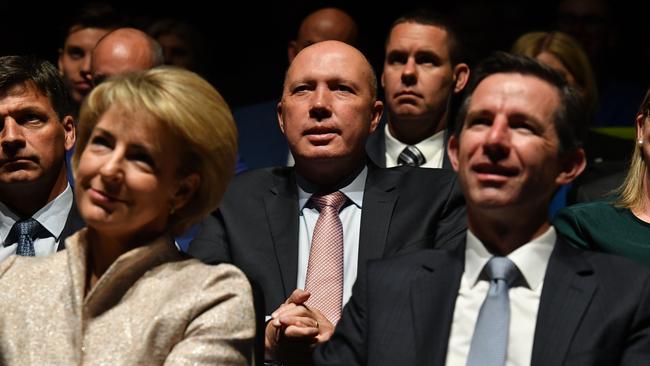Hi-tech drones plan for borders in slow motion
The Coalition failed to fund a fleet of drones that are “critical to maintaining secure borders”.

The Coalition has failed to fund a fleet of drones and maritime surveillance technology worth hundreds of millions of dollars that Home Affairs Minister Peter Dutton said were “critical to maintaining secure borders” and due to be delivered by 2024.
In October last year, Mr Dutton — flanked by military leaders — announced plans for the Future Maritime Surveillance Capability project to equip the super-department with new drones and undersea sensors to monitor Australia’s borders. “This is a very significant investment and we can’t keep our borders secured without it,” Mr Dutton said.
“We’ve got significant amounts of money in the budget over the forward estimates and obviously … a commitment that will be enduring for us because, as an island nation, we need to make sure we’ve got the best technology available to keep our waters safe, to keep our borders secure and to keep Australians safe, and that’s what we’re investing it.”
The Australian Strategic Policy Institute's John Coyne said earlier this year that the announcement represented a “a once in 50 years shake-up of Australia’s civil maritime surveillance capabilities”.
While the department said the Future Maritime Surveillance Capability project was “continuing”, The Australian understands some staff working on the program have been reassigned.
“The Department of Home Affairs continues to progress the Future Maritime Surveillance Capability project to develop concepts and options for the next-generation maritime surveillance capability,” a spokesman said.
“The project is led by a departmental SES officer and an Australian Border Force superintendent.
“Any decision on the design or implementation of any future stage of the project will be subject to the government’s direction.”
Despite a positive response from industry last year, no provision for the project’s next phase were outlined in last month’s budget, which focused on personal income tax cuts, infrastructure spending and a return to surplus.
Mr Dutton previously said the project would “achieve full capability by the end of 2024” and companies including Airbus SE, Italy’s Leonardo SpA, Northrop Grumman Corp and Lockheed Martin Corp submitted responses to a request for information late last year.
Australia has the world’s third-largest economic exclusion zone, at 8.2 million square kilometres, containing oil and gasfields, fisheries and shipping lanes.
The department is keen to expand its coastguard-like functions and replace ageing 10 Dash 8 surveillance aircraft that began service in 2006, since the contract for the planes expires in 2021.
Retired Royal Australian Navy rear admiral James Goldrick also called for a complete overhaul of Australia’s civil maritime security capability, and the audit office has flagged a potential audit into the Dash 8 contract.
The Australian has confirmed that the Home Affairs Department underwent a restructure as recently as last month to remove the “intelligence and capability” group, after deputy secretary Maria Fernandez left. These functions were placed in new groups or divisions, the department said.
“On 3 April 2019, it was announced that, after a distinguished career, Maria Fernandez has decided to leave the Australian Public Service, with her last day in the office on 18 April 2019, followed by a period of leave,” a department spokesman said.
“On 1 May 2019, the Department introduced a new structure. As part of this, a new Technology and Major Capability Group was established. In addition, identity, data and intelligence functions were realigned. Arrangements to fill the Senior Assistant Secretary Major Capability are underway.”
Sources said although work had halted, the project had not been cancelled. Mr Dutton was approached for comment.



To join the conversation, please log in. Don't have an account? Register
Join the conversation, you are commenting as Logout